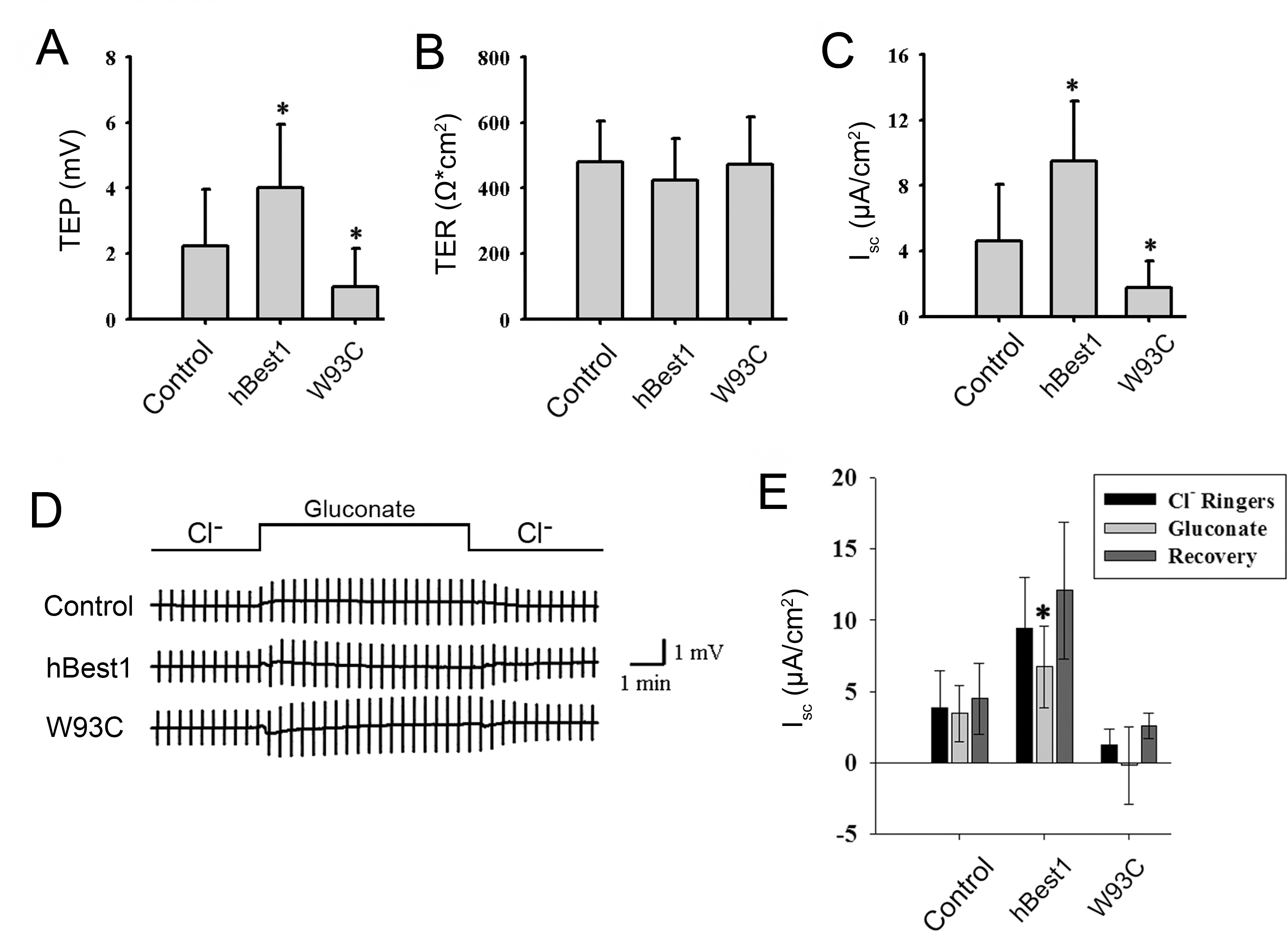Figure 3. Baseline characteristics of hBest1 and hBest1W93C in fhRPE and the contribution of Cl- to short circuit current (Isc). The transepithelial electrical properties of monolayers of fhRPE overexpressing hBest1 or hBest1W93C (W93C) were compared with control fhRPE cells. A: Transepithelial potential (TEP), (B) transepithelial resistance (TER), and (C) short-circuit current (Isc) are shown. The contribution of Cl- to differences in Isc was determined by substitution of Cl- with gluconate in the bath media. Representative voltage recordings are shown in D, and Isc is shown in E. Vertical bars in the recordings in D represent the voltage change in response to a 10 µA bipolar current pulse used to determine TER at 30 s intervals. For cells
overexpressing hBest1, a significant (p<0.03) reduction in Isc occurred in response to Cl- substitution, the effects of which were reversible. Bars in E indicate the Isc recorded in Ringer’s (Cl- Ringers), during ion substitution (gluconate), and following return to Ringer’s (recovery). Bars in A-C and E represent mean ± SD with n=23 control, n=16 hBest1, and n=11 W93C for A-C. For panel E, n=20 control, n=14 hBest1, and n=9 W93C. *p<0.04 versus control.

 Figure 3 of
Marmorstein, Mol Vis 2015; 21:347-359.
Figure 3 of
Marmorstein, Mol Vis 2015; 21:347-359.  Figure 3 of
Marmorstein, Mol Vis 2015; 21:347-359.
Figure 3 of
Marmorstein, Mol Vis 2015; 21:347-359. 